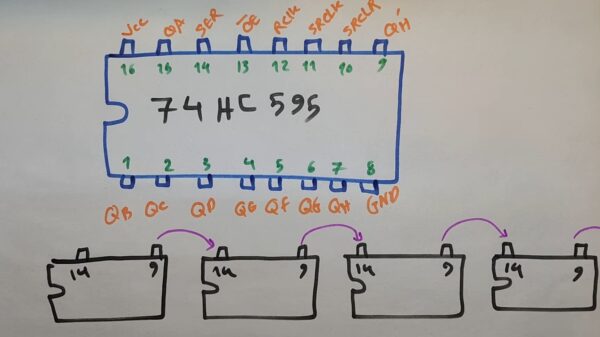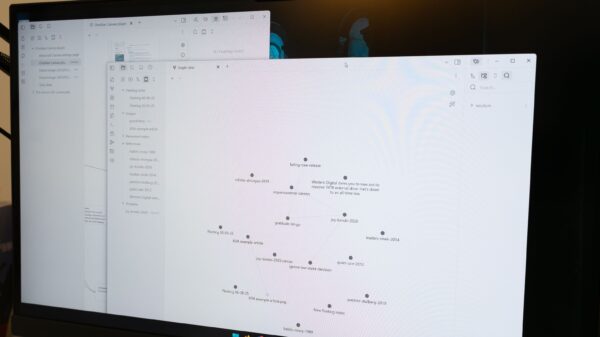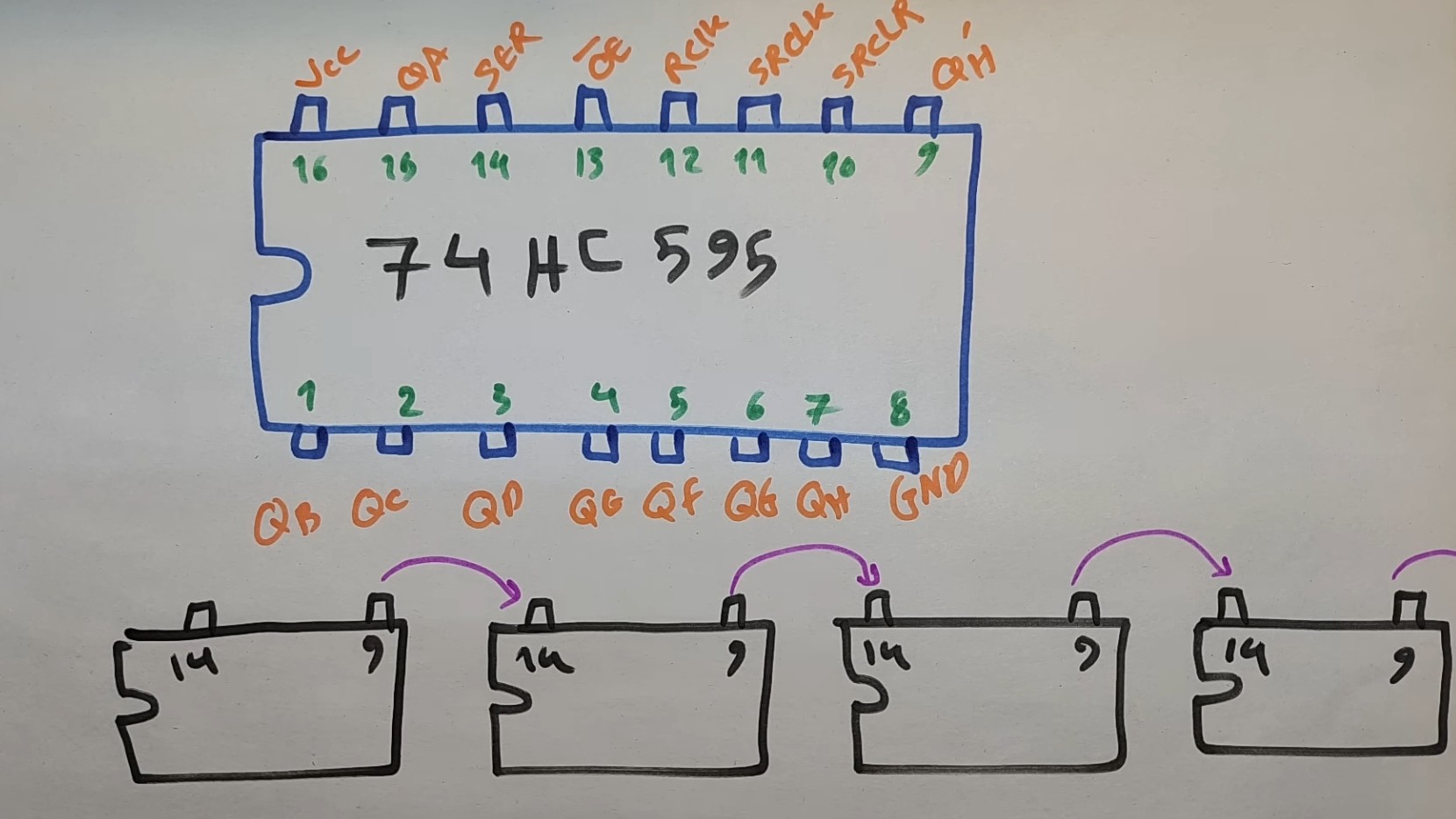In a recent video, hacker Electronic Wizard showcased the capabilities of the 74HC595 shift register, demonstrating its application in driving 7-segment displays. This technology allows users to enhance their projects while minimizing the number of pins required from their microcontrollers, making it a practical solution for electronics enthusiasts and professionals alike.
The 74HC595 functions as a compact one-byte memory unit, providing data directly through its eight output pins without the need for input addresses. Each time the clock pin (CLK) receives a pulse, the bits in the eight-bit memory shift right, creating space for a new bit on the left side. Additionally, the bits that drop off the right can be daisy-chained into another 74HC595 by connecting pin 9 to pin 14 of the subsequent register.
One of the standout features highlighted by Electronic Wizard is the active-low Output Enable pin (pin 13). This pin is crucial during initialization, as it prevents unwanted data from displaying on the 7-segment displays. Furthermore, the 74HC595 can supply current independently, which reduces the overall power demand on the microcontroller, enhancing the efficiency of the project.
Multiplexing vs. Shift Register Benefits
While Electronic Wizard also covered the multiplexing method for driving multiple 7-segment displays, he pointed out its limitations. Multiplexing can require a significant number of pins and may lead to high-frequency flashing. Although this flashing is typically invisible to the human eye, it can be captured by cameras and recording equipment, making the 74HC595 a more reliable choice for display applications.
The key takeaway is that leveraging just three pins from a microcontroller, users can effectively drive one or multiple 7-segment displays. For those eager to delve deeper into the features and pin configurations of the 74HC595, the video provides a comprehensive overview. Additionally, interested readers may explore how the Bus Pirate 5 utilized two 74HC595 devices to expand its pin capabilities, further illustrating the versatility of this shift register.
As technology continues to evolve, understanding and implementing tools like the 74HC595 shift register can significantly enhance project quality while maintaining efficient use of microcontroller resources.
































































